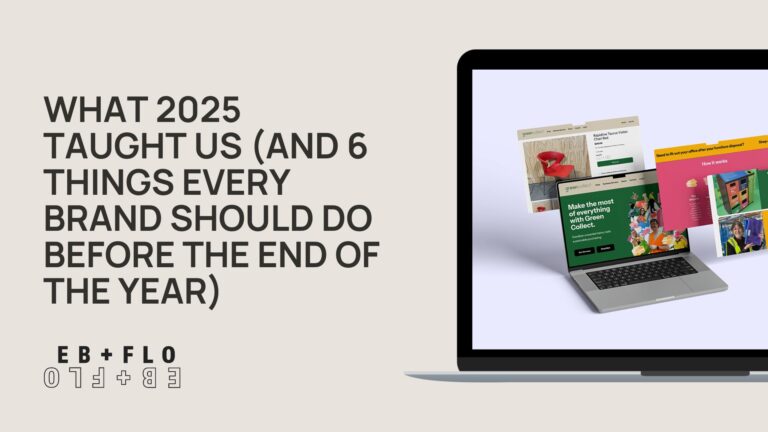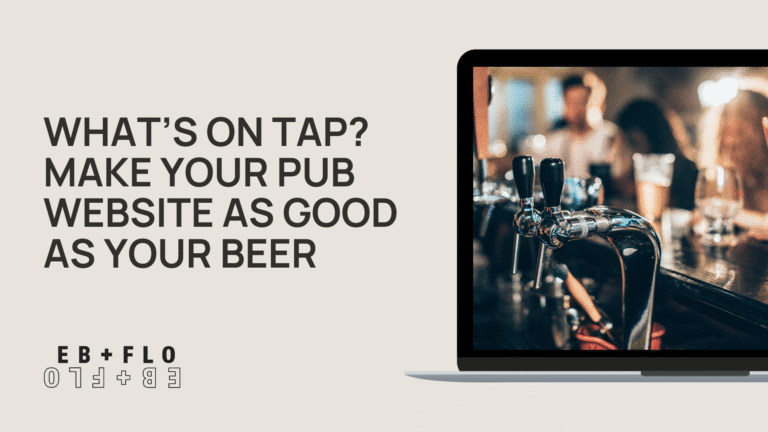Here is a spicy [fun fact]: the health of your website is more important than its design.
Because… how would users even see the design if they can’t load anything?! Remember, the average user spends around 45 seconds on a website, so even if you have the most high-end mind-blowing design but everything is lagging and not loading properly, then… unfortunately, you missed your golden opportunity to win your potential clients over.
You’ve irritated them, and yes, statistics show that they will never want to revisit. You think, their loss, right? Well, not exactly. A beautiful lagging website won’t keep your business afloat.
Let’s see what you need to do to make sure your site is alive and kicking. You don’t have to be super technical to master this. There are some simple steps you can follow so your website stays nice and healthy and performs well.
Site Speed: 79% of web shoppers who have trouble with website performance say they will not return to the website to buy again.
As we said before, the performance and speed of your website is your number one priority. Websites that load quickly are favoured by users and search engines alike. A study by Akamai found that 47% of consumers expect a page to load in 2 seconds or less, and 40% of users will abandon a page if it takes more than 3 seconds to load.
Another survey, by Pingdom, revealed that 79% of web shoppers who have trouble with website performance say they will not return to the website to buy again
On top of that, slow-loading websites will give you lower search engine rankings. Search engines use website speed as a key factor in ranking results, and as we all know, not many people would even go beyond the first results’ page.
So your website has a good chance of being forever forgotten and not generating any business if it runs at snail’s speed.
Mobile responsiveness: Aka ‘how fast does your website load on your phone’
Let’s face it… We’re all addicted to our phones, so having a well-running mobile version of your website is not an option, it’s a must. But did you know that the mobile website version can have a different speed score from the desktop?
In 2021, mobile devices accounted for 54.8% of global website traffic. If maths is not your forte, we’ll reiterate this for you: mobile websites make up more traffic than desktop ones.
So having a healthy mobile version of your website is arguably even more important than desktop. Plus, websites that are optimised for mobile devices are more likely to rank well in search results and provide a better user experience.
This is especially true nowadays since Google uses mobile-first indexing, translating to: the data showing the speed of the mobile website is the one that’s used to rank the results in searches.
User Engagement: Aka ‘Is your website fun?’
Websites that engage visitors through features such as fun videos, custom illustrations, and information that makes your business unique tend to be more successful. This is also where UI & UX come into the game.
Making users feel like they can contribute or interact with each other enhances the excitement around visiting your page. Also, the users feel valued and included.
Technical SEO: Or how you make your website seen
SEO is the absolute buzzword in the digital world. Yet, to most non-experts, it’s a totally confusing concept. We absolutely get it! So what is SEO?
Broadly speaking, there are three types of SEO: on-page, off-page and technical. On-page SEO concerns the content, words, images and metadata that are visible on your website. Off-page is the links, both to and from other websites, the PR and the link-building structure.
Technical SEO encompasses how the site functions. It includes factors such as having a sitemap, having a clean URL structure, using proper tags and optimising images and videos for search engines.
Let’s simply explain the more technical terms here. A sitemap is, as the name suggests, something like a map of your website that contains information about the content, linked pages, and media on your website.
URL refers to the web page’s unique address. You can think of it as a digital location identifier. So having a clean URL structure means you have a simplified, user-friendly and easy-to-read “address book” of your website.
Site Security
Okay, this is not a fun point. No one wants to think about being hacked, right? However, site security is absolutely crucial to guarantee your visitors feel comfortable with sharing their data. Websites that are secure and protected against malware, hacking and other cyber threats are more trustworthy to visitors and search engines.
You must ensure your website is safe for users and your business. Cyber attacks can steal sensitive information about you and your customers, such as bank details and personal data, remove your website from search engines or make it crash.
Regular backups and tools such as Google Recaptcha on contact forms enhance security and user-confidence when using the contact forms, signing up for your email lists, newsletters or any other way they can interact with your company.
Backlinks: Aka hyperlinks and link building
Backlinks are hyperlinks, parts of your website that refer the user to another page. While it’s good to include some in your website, you have to make sure you choose the referral sites well. The backlinks should send the user to a reputable source. We call these backlinks “high quality”.
Ideally, you want to include a mix of links from other websites. This increases your site’s credibility and drives traffic from other reliable places. You also want links to other pages within your website, so users can spend longer with your business. These are called breadcrumbs. You can also make semi-hidden pages if you want to keep certain landing pages just for the users with the URL.
If you opt for that, make sure you mark this as ‘not indexable by search engines’ to avoid lowering your ranking. All this will improve your website’s authority and visibility in search engine result
Accessibility
Websites accessible to users with disabilities, such as those who use screen readers, can increase reach and improve the website’s reputation. This helps with SEO too. Here are some simple things you can do: allow users to enlarge fonts, don’t use flashing colours and minimise information-heavy tables.
You can research other options such as adding keyboard navigation, alt text to imagery or using descriptive video and audio. Take an extra moment to adapt your website, it will make a huge difference to some people!
Analytics and Monitoring
Regular monitoring of website performance, user behaviour and search engine rankings helps identify areas for improvement and prevent issues before they become major problems. Being very data-heavy, analytics is definitely overwhelming at the start. But the information provided is invaluable and must be checked regularly. This is something you should be doing every month (minimum!) to track and record how your webpage, and consequently business, is doing.
Using this data, you’d be able to see exactly where your users come from, what they’re searching for and how they’re behaving on your website. It takes time to learn, but you have to get into the habit of doing it. So whether you’d be up for doing this yourself or you’d prefer to hire someone to help, this is a step that must not be missed.
Ready to boost your brand’s visibility and engagement? Contact Eb + Flo Digital for tailored website solutions, powerful digital marketing strategies, and compelling content creation. Let’s amplify your brand’s impact in the digital space!




